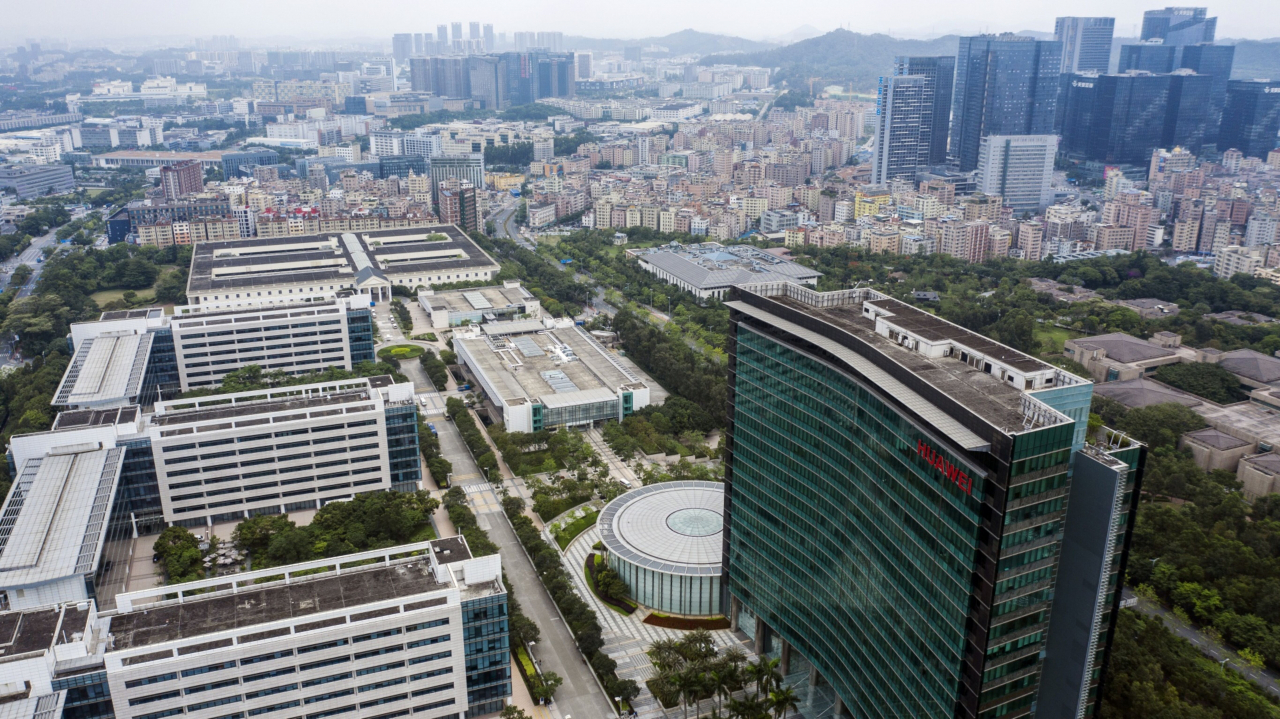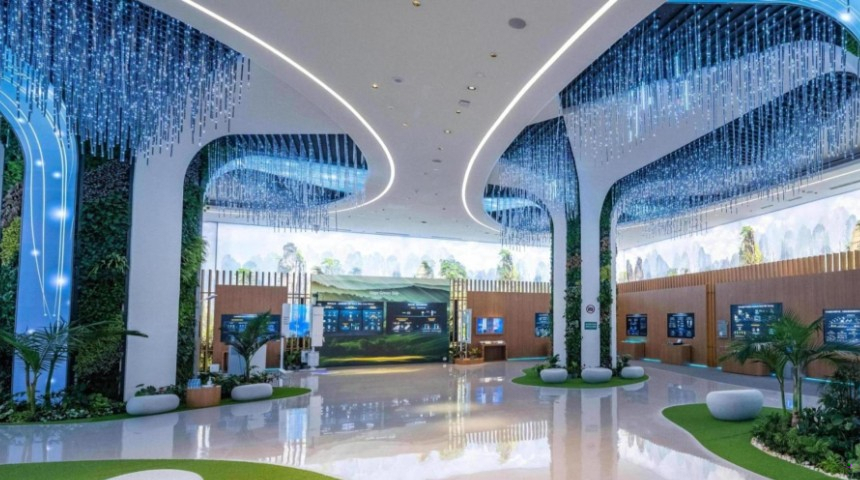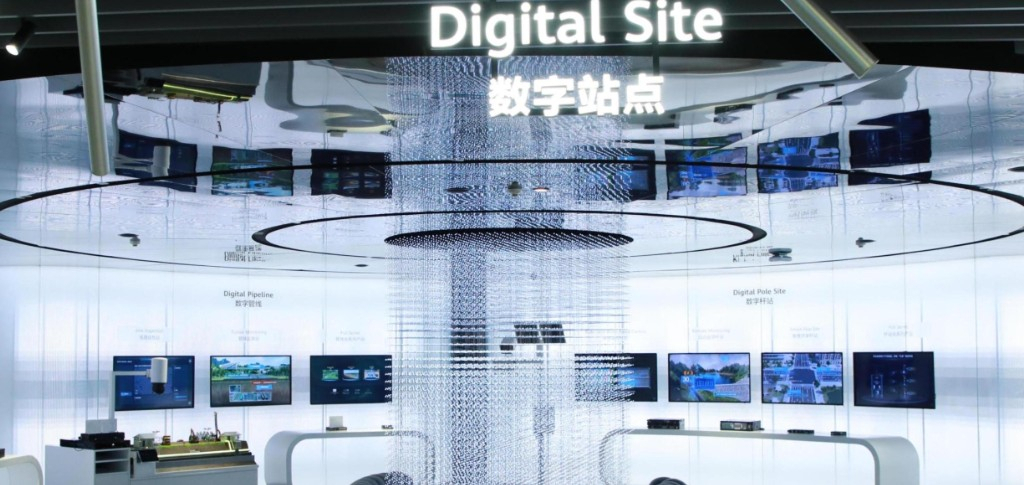[From the scene] A glimpse at Huawei’s vision for 5.5G future
By Jie Ye-eunPublished : May 21, 2023 - 17:28

SHENZHEN, China -- Chinese tech giant Huawei Technologies last week offered a group of Korean reporters a rare glimpse into its latest communication solutions, especially its vision for 5.5G network service, at its headquarters in Shenzhen, a northeastern city affectionately dubbed the “Silicon Valley of China.”
At the headquarters entrance, a huge screen featured portraits of several Western scientists Isaac Newton and Thomas Edition. The sign read in Chinese: “Industry becomes stronger only when long-term basic research is emphasized. Without basic research, the industry is futile.”
The Darwin hall, located on the first basement floor of the building, was dedicated to promoting Huawei’s ICT solutions ranging from 5G and optical LAN networks to cloud and data storage systems that are crucial to accelerating digital transformation across industries.
The company is betting big on leading the 5.5G era, a vision that was first unveiled at the Global Mobile Broadband Forum in 2020. While the 6G network service is expected to be commercialized by 2030, Huawei aims to start the 5.5G service, about 10 times faster than the current 5G, in 2025.
“When the 5.5G network is commercialized, everything will be connected without physically connecting power to each device or without a battery," the company's senior manager Daohen Huang told Korean journalists.

Last year, Huawei invested 161.5 billion yuan ($23 billion), or 25 percent of its revenue, in research and development for 5.5G technologies. It ranked fourth in the 2022 European Union Industrial R&D investment scoreboard, while Google's parent company Alphabet topped the list with Meta and Microsoft coming in second and third, respectively.
The Chinese government is also working to expand the use of 5G technology. In China, the 5G subscription rate stands at 80 percent, which compares to 60 percent in South Korea. Of some 2.5 million 5G stations around the world, 2 million are located in China, the Huawei manager said.
Ahead of the 5.5G rollout, Huawei has already applied its 5G technology to various industrial sites, including the Port of Tianjin, a smart port that opened in October 2021. It utilized 5G and microwave technologies in coal and oil mining sites where it is difficult to lay cables, as well as France-based Schneider Electric’s smart production lines.
The New ICT exhibition hall, a five-minute drive from Darwin hall, showcased Huawei’s successful digital transformation cases based on communication technology, including smart campuses, digital offices and smart ports.
A panoramic view of the Shenzhen campus appeared on a large screen when entering the space. The smart campus' Intelligent Operation Center platform can control all campus facilities by connecting smart devices to a cloud on Huawei’s Wi-Fi 6 terminals, networks, IT computing and AI-based security technologies.

Huawei’s Dongguan campus, which houses the tech giant’s research and development facilities, has been implemented as a smart campus. AI-powered CCTV cameras and smart Internet of Things sensors installed all over the campus collect and analyze data in real time, which can be displayed on a single screen for various controls.
The company’s smart airport solution is also being used at Shenzhen Bao'an International Airport. Its AI-powered system helps automate and allocate terminal stands within two minutes for more than 1,000 flights arriving and departing from the airport per day. Previously, it took four hours to complete the tasks manually.
It further improved contact stand rates and passenger boarding bridge turnaround times, allowing 2.6 million passengers to experience near-boarding gate travel at the airport every year.
The smart IOC platform has also helped Huawei build green ICT infrastructure. The company's event engineer Xiaorui Liu said, "The integrated operation management platform identified facility waste and saved energy by 8-15 percent annually."
By Jie Ye-eun
Korea Herald correspondent



















![[Today’s K-pop] Treasure to publish magazine for debut anniversary](http://res.heraldm.com/phpwas/restmb_idxmake.php?idx=642&simg=/content/image/2024/07/26/20240726050551_0.jpg&u=)